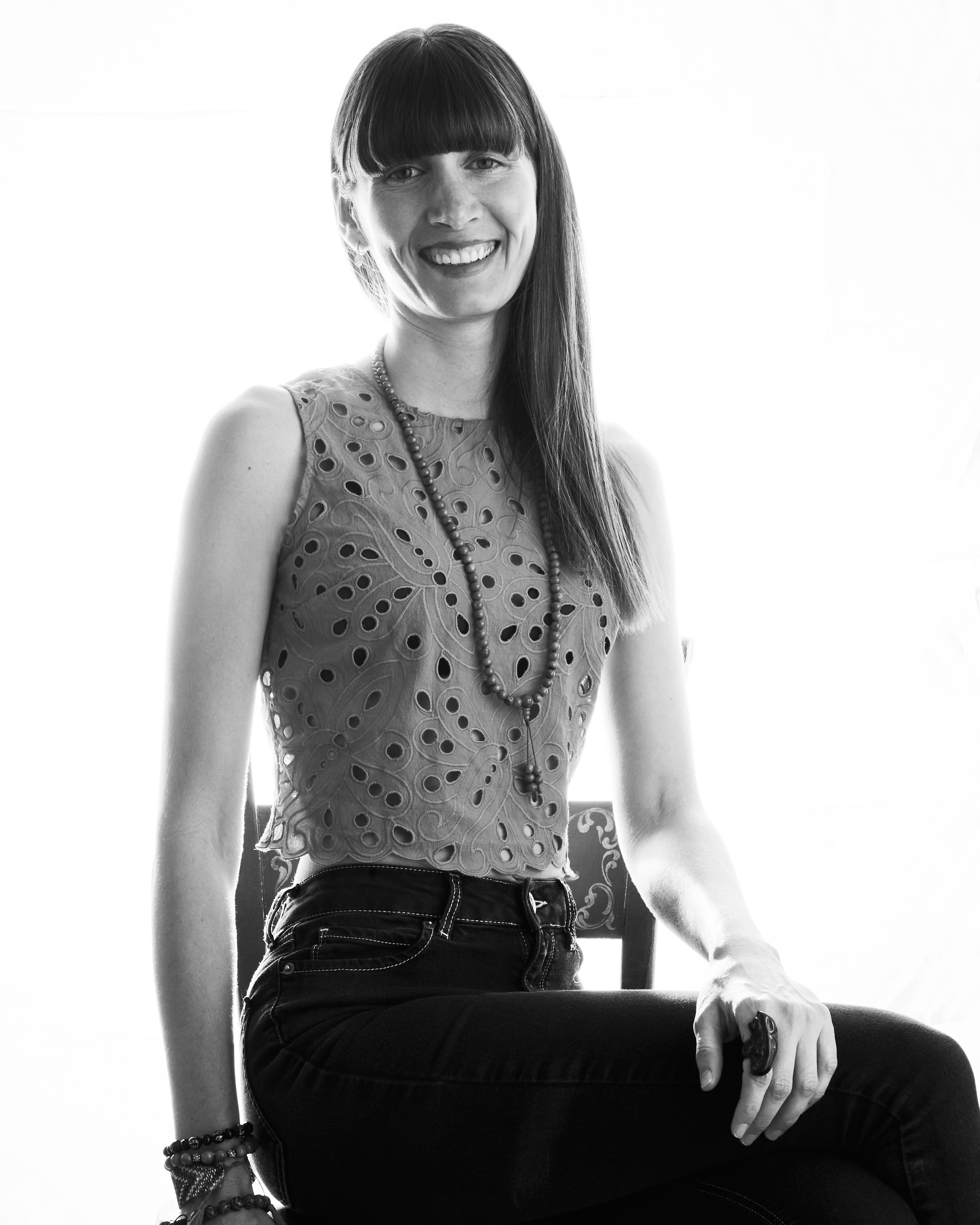
The artist herself, Ekin Balcıoğlu.
Ekin Balcıoğlu is a visual artist and editor, and the owner of Old Bones - Gallery for Clay and Textiles in Arroyo Seco, NM. On the heels of The Mortal Coil, Balcıoğlu sat down with us to discuss her partnership with ceramicist Max Massey, the connection between her heritage and sgraffito iconography, and her bathing magazine, Hamam.
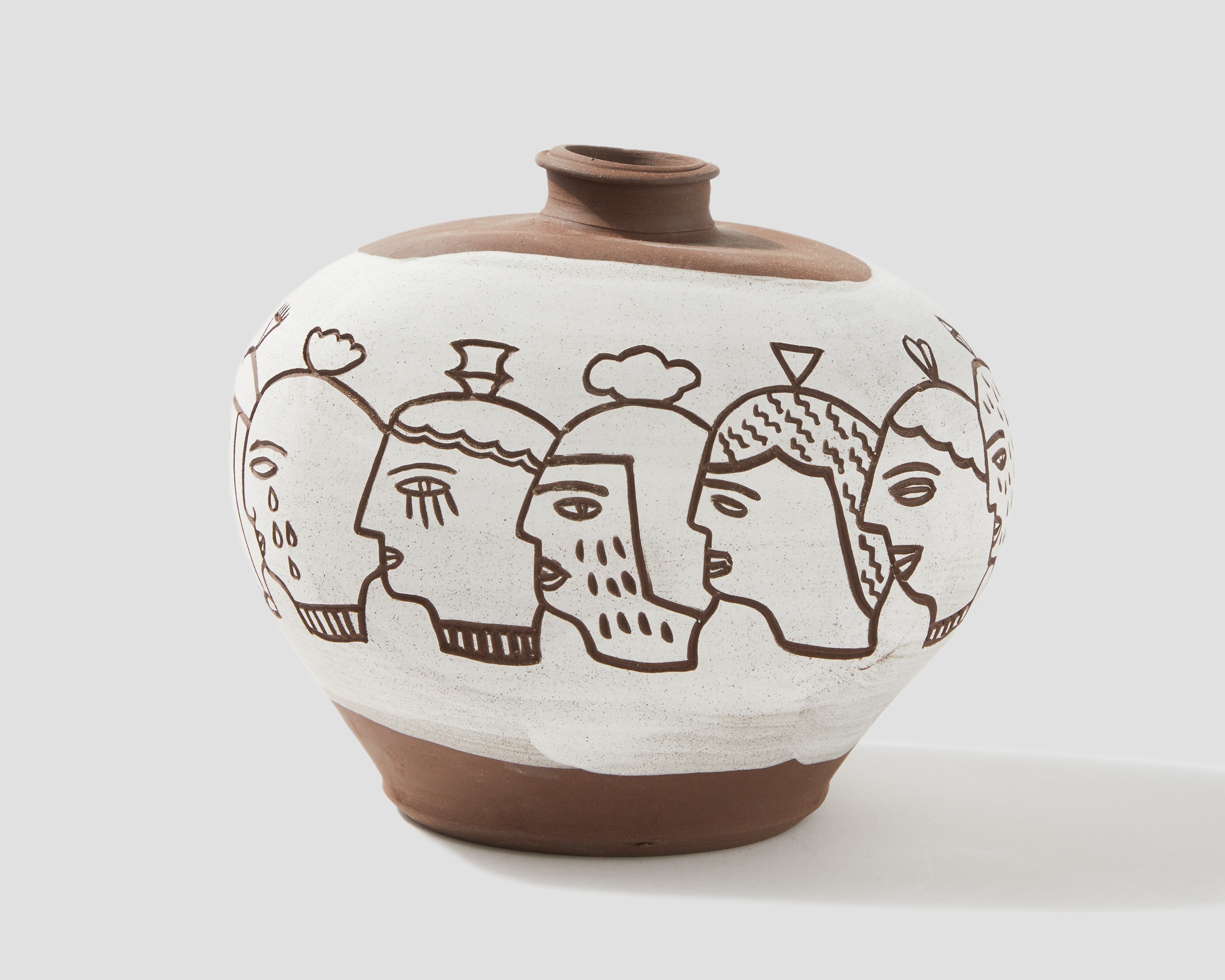 EKİN BALCIOĞLU | Nirvana, 2025. Ceramic, 5.5 x 6.5 x 4.5 in (14 x 16.5 x 11.4 cm). Photo by Marylene Mey, courtesy of form & concept.
EKİN BALCIOĞLU | Nirvana, 2025. Ceramic, 5.5 x 6.5 x 4.5 in (14 x 16.5 x 11.4 cm). Photo by Marylene Mey, courtesy of form & concept.
Spencer Linford: Your hand-built ceramics debuted in our shop last year during Querencia. How does the process of producing these new, wheel-thrown works differ from your hand-built process? Are there any similarities?
Ekin Balcıoğlu: One of the most unexpected and lucky things that happened last year was meeting Max Massey, my partner in clay. We started working side by side at a community studio, and somewhere between the scraps and the kiln firings, we started collaborating. That’s when everything shifted. Suddenly, I was working on these clean, wheel-thrown forms, surfaces so smooth they almost asked to be drawn on. It gave me a new way [to execute] my line work. The sgraffito popped in a different way, crisp, intentional, like the drawing was always meant to be there.
That said, I’ll always love handbuilding. There’s something in the wobble, the asymmetry, the rough edges. It’s where I first found joy in clay. It felt alive, full of character, kind of wabi-sabi in the best sense. You leave room for the unexpected. So this new work isn’t a departure so much as a deepening. Now I get to play with contrast: the refined and the raw, the precise line on the slightly off-kilter pot, or the messy line on the perfect form. I think they both hold something human.
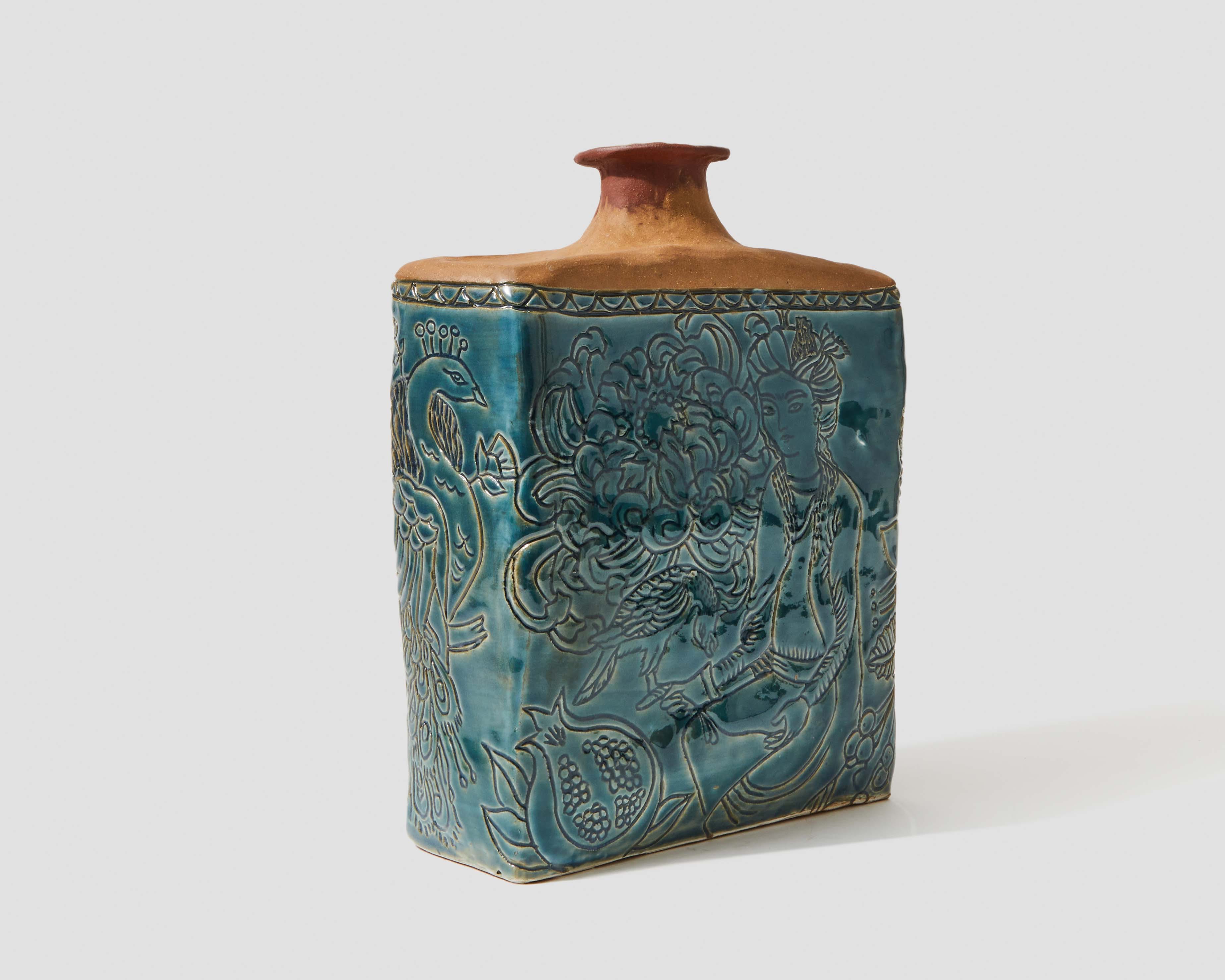
SL: Could you introduce us to your new partner/collaborator, Max Massey? How did your relationship with Massey begin, and what is it like producing work as a team of two rather than individually?
EB: I met Max while we were both working at a community ceramics studio, just kind of orbiting around the same wheels and wedging tables. We started sharing tools, then clay, then ideas, and eventually decided to try making work together. There wasn’t some grand plan at first. It was more like, “Let’s just see what happens if you throw something, and I carve into it.” But once we started, it clicked. Max has this deep understanding of form and proportion, and the surfaces he creates on the wheel are just generous. They’re like these open fields that invite line, texture, story. It pushed my practice into a new space.
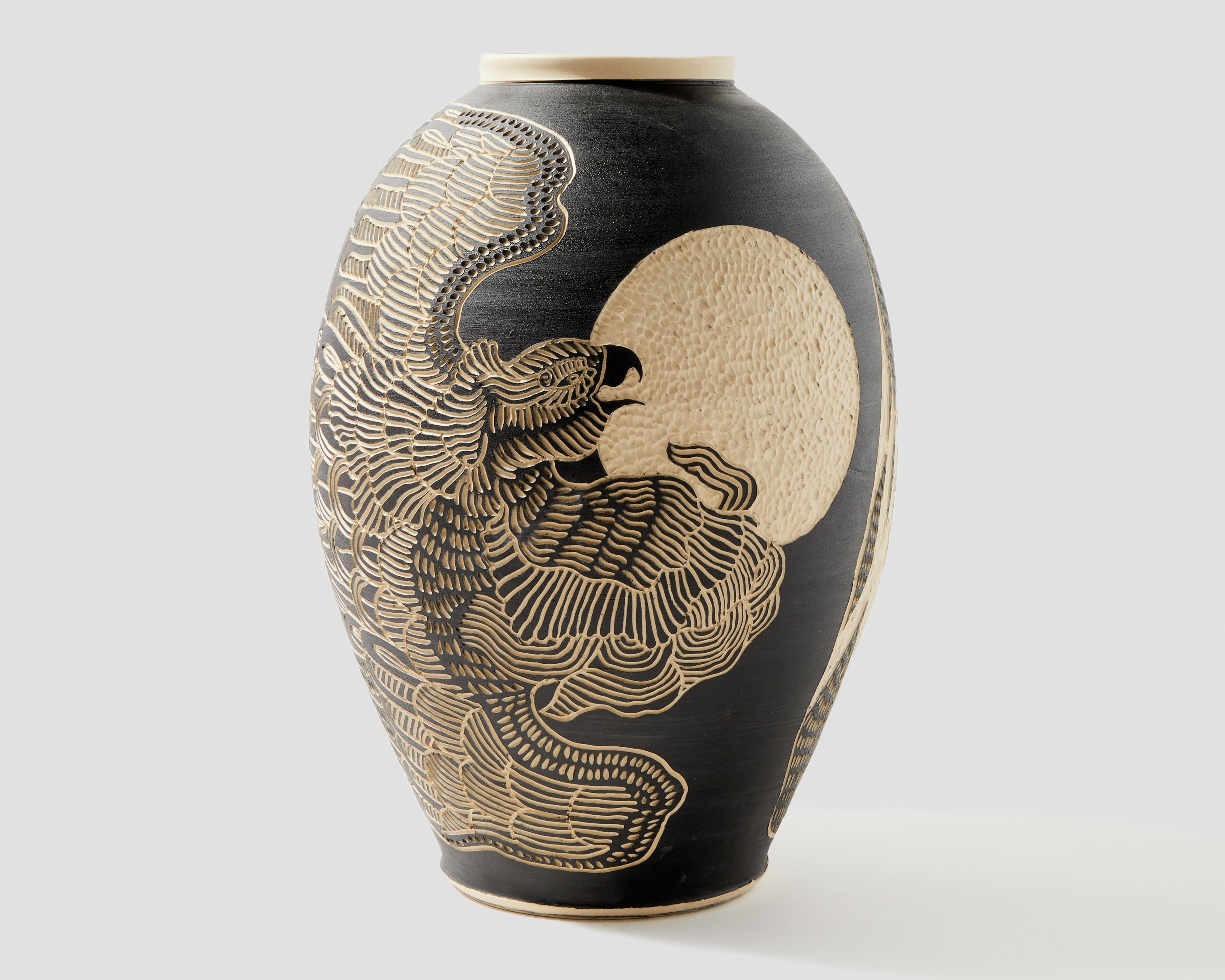
SL: Many of these works feature mythological symbols and motifs from antiquity. Could you share with us the significance of this iconography in your work and why it attracts you?
EB: My work draws a lot from myth, but not in a fixed or nostalgic way. I’m interested in these ancient symbols—snakes, goddesses, eyes, thresholds—not because they’re static, but because they’re still vibrating. My family comes from Mesopotamia, but also from Greece, the Balkans. These are regions dense with stories, ruins, migrations, and complicated layers of belief. I carry all of that. I think about the divine feminine as it shows up across those geographies, not just as beauty or softness, but as power, chaos, birth, [and] destruction. That spectrum lives in the work.
At the same time, my current spiritual practice is rooted in Tibetan Buddhism. I’m doing the ngöndro right now, which is a foundational set of practices: Ritual, repetition, mantra, and prostration. It’s long [and] demanding, but also deeply transformative. The discipline of it is changing how I relate to time, form, [and] devotion. I’m drawn to the way symbols operate in that tradition. Not as metaphors, but as real forces. The wrathful deities, the seed syllables, [and] the mudras. They carry weight. They’re meant to work on you.
So my vessels, my drawings, they’re not just aesthetic. They’re trying to do something. Maybe they’re offerings, maybe they’re portals, maybe they’re prayers. I don’t really think of mythology as something in the past. I think we’re still inside it. The stories are still happening, they’ve just changed costume[s].
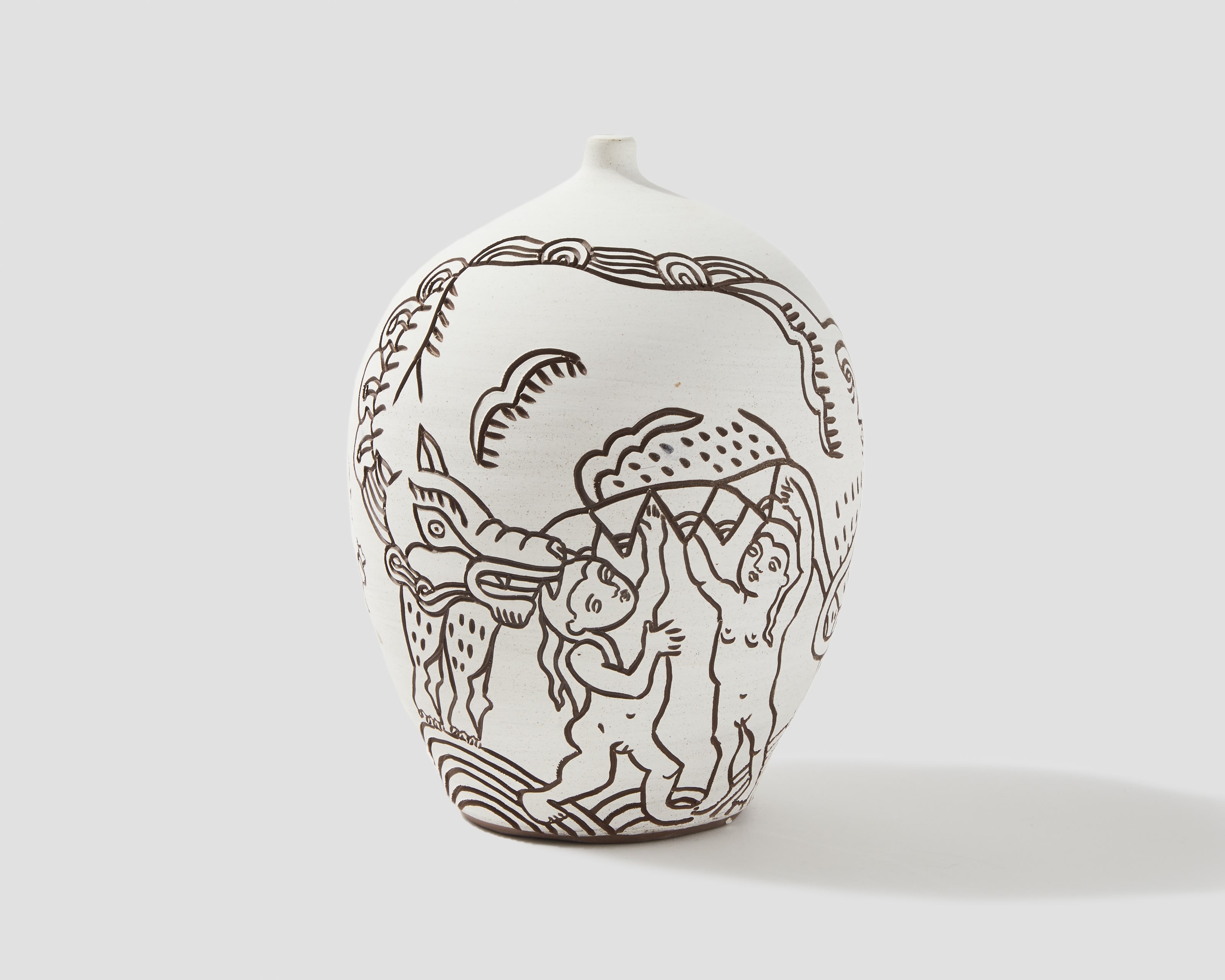
EKİN BALCIOĞLU | She Wolf, 2025. Ceramic, 8 x 5.5 x 5.5 in (20.3 x 14 x 14 cm). Photo by Marylene Mey, courtesy of form & concept
SL: In addition to your ceramic practice, you’re also a painter and writer. You’re also the editor & publisher of Hamam Magazine. Could you explain how the magazine came about? Are there any creative similarities, process-based or otherwise, between producing the magazine and your ceramics practice?
EB: Hamam came from a kind of urgency. I felt this deep pull to unite the bathers, people who were using bathing as something more than hygiene, as ritual, as healing, as return. At the time, in the U.S., it still felt a little fringe. Now there’s this whole movement emerging around communal bathing[:] hot springs, saunas. People are waking up to it. I’ve been lucky to be part of that wave early on, a pioneer, maybe. But really, I was just listening to something old that wanted to be remembered.
Starting Hamam was also about learning to let go. You build a structure, gather the voices, make it beautiful, and then you release it[;] Same with clay[,] same with painting, [e]specially watercolor, where you can’t control the pigment once it hits the wet page. My work in both mediums is about accepting impermanence, inviting chance, and still trying to say something true.
That idea carries into the gallery I just opened in Arroyo Seco, Taos, New Mexico. It’s called Old Bones, named after the Gary Snyder poem. [It’s] an ode to him, really. We even published his poem in Hamam, so it feels full circle. At Old Bones, I mostly show the collaborative ceramic work I make with Max, along with my own paintings, textiles from my homeland, and a few other pieces that feel spiritually or materially aligned.
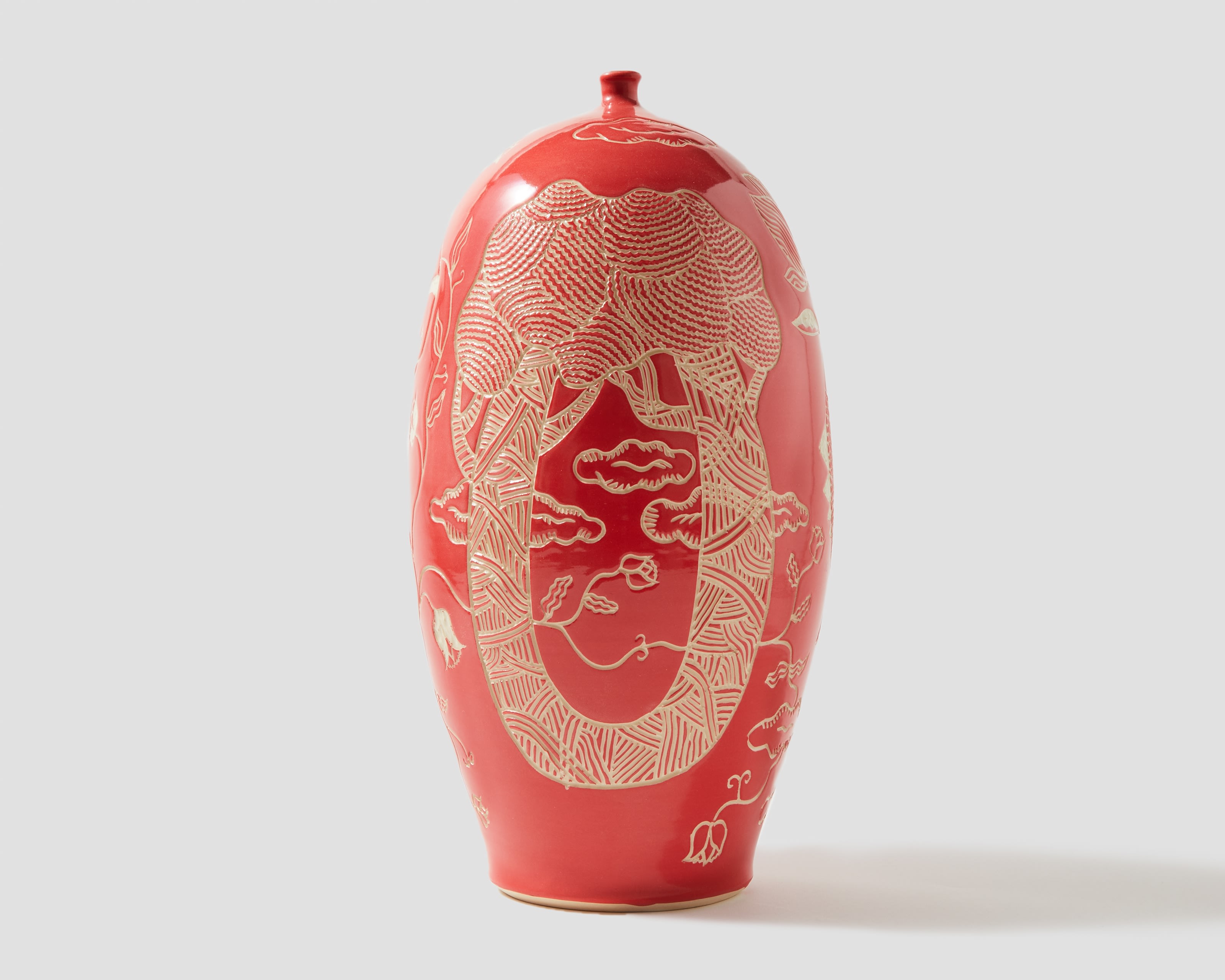
EKİN BALCIOĞLU | Twin Trees, 2025. Ceramic, 15 x 6.5 x 6.5 in (38.1 x 16.5 x 16.5 cm). Photo by Marylene Mey, courtesy of form & concept
SL: The Mortal Coil is up until 11 May, but this exhibition is not the only project you’re working on this year. Could you share, if you’re able, what else you have planned for the year? And what is the best way for people to keep up with you?
EB: I’m deep in production on the sixth issue of Hamam, which is themed dirty, a word that can mean so many things, from soil and sweat to transgression and pleasure. I’m also in the early stages of a new publication project—still under wraps, but it’s going to make waves.
The best way to keep up is to follow along on Instagram, @oldbonesgallery and @hamammagazine, or to sign up for the Hamam newsletter at hamam.co. That’s where I share new work, writing, upcoming shows, and whatever else is unfolding.
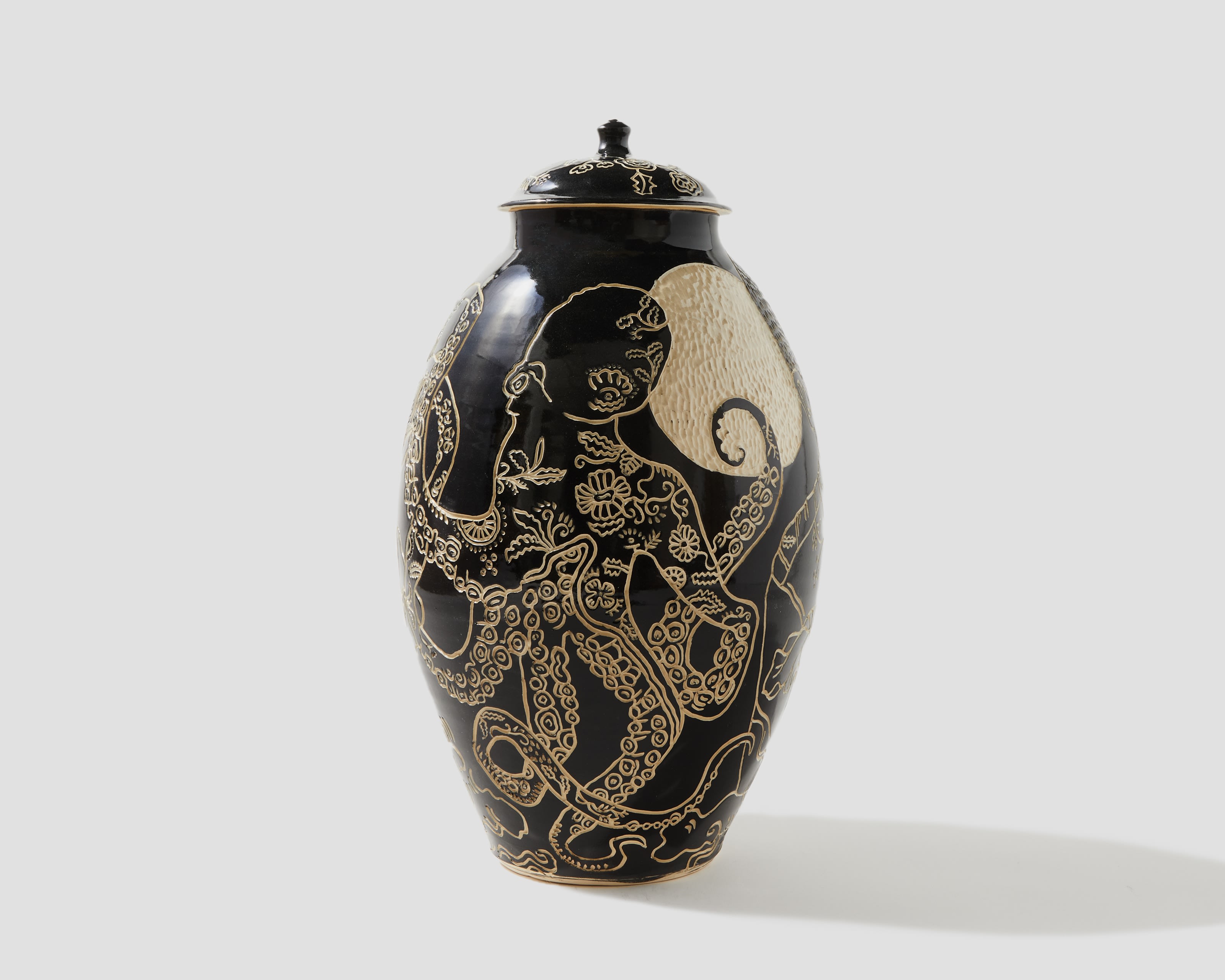
EKİN BALCIOĞLU | Desire, 2025. Ceramic, 17.5 x 9 x 9 in (44.5 x 22.9 x 22.9 cm). Photo by Marylene Mey, courtesy of form & concept
